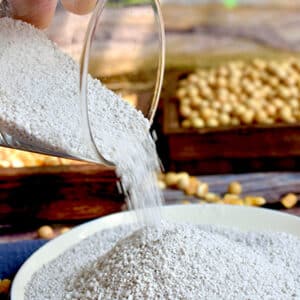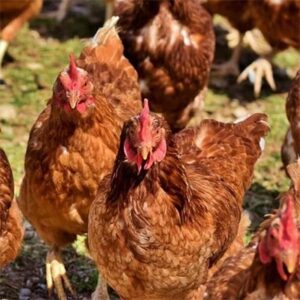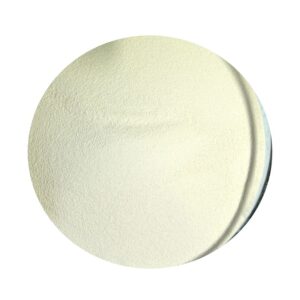Product Video
Product Introduction
Product Description
Glucose oxidase catalyzes the reaction of glucose with oxygen to form gluconic acid and hydrogen peroxide has significant bacteriostatic and bactericidal effects. It has stronger temperature resistance and better efficacy in animal intestinal environments. It is an ideal substitution for some antibiotics. Glucose Oxidase can reduce the harm of feeding mycotoxins to animal organisms, it is testified to effectively control bacterial diarrhea in animals and improve animal performance.
Feed enzymes are produced by microbial fermentation and are added to feed to improve digestion and utilization of feed or improve metabolic efficiency in animals. Enzymes that can be added to feed include Protease Mix, Thermostable Phytase, Highly Efficient Phytase, NSP Enzyme, Lipase, Pectinase, Cellulase, α-Amylase, Alpha- Galactosidase, Beta-Glucanase, Glucose Oxidase, Thermostable Acid Protease, Acid Protease, Thermostable Acid Beta-Mannanase, Beta-Mannanase, Xylanase, etc.
About 70% or more of poultry sticky wheat rations worldwide have enzymes added to them, and nearly 90% of poultry feeds in Europe contain enzymes.
Enzyme preparations are divided into three main categories:
Non-starch polysaccharidases
Non-starch polysaccharide enzymes include xylanase, β-glucanase, β-mannanase, cellulase, α-galactosidase, pectinase, etc., which act on the corresponding NSP in the feed. livestock and poultry do not secrete this type of enzyme and must be added exogenously from the feed, which is the main enzyme preparation for feeding.
Phytase
Phytase has a special spatial structure that sequentially separates phosphorus from phytic acid molecules and degrades phytic acid (salt) into inositol and inorganic phosphorus while releasing other nutrients bound to phytic acid (salt).
Endogenous digestive enzymes
Endogenous digestive enzymes are enzymes that can be secreted by the animal’s digestive tract itself, mainly proteases, amylases, and lipases. In some special cases, endogenous enzymes also need to be supplemented by the feed.
Product Feature
- Improve the intestinal health of animals and reduce the occurrence of intestinal problems: Glucose oxidase can inhibit the growth and reproduction of harmful bacteria in the intestinal tract of animals by consuming oxygen in the intestinal tract, producing gluconic acid and hydrogen peroxide, a strong oxidizing substance, so as to improve the intestinal health and reduce the occurrence of diarrhea, overfeeding, enteritis and other problems.
- Reduce mycotoxin harm to the animal body: Glucose oxidase can enhance the REDOX reaction of animal liver, two ways to reduce the harm of mycotoxin in feeding to the animal body, are to shorten the estrus cycle of sows, improve the reproductive health of eggs and breeding birds have significant effects.
- Improve animal performance: Glucose oxidase can increase feed intake of weaned piglets, reduce diarrhea of piglets, decrease feed to meat ratio, increase egg production rate and prolong the maintenance time of peak egg production, which has a significant effect on improving animal performance.
- Reduce the cost of drug use at the breeding end: due to the significant bacteriostatic and bactericidal effect of glucose oxidase, the use of glucose oxidase can reduce the amount of drug use and the cost of drug use, and reduce the risk of feed and food safety.
Product Parameter
Species: poultry or livestock
Dosage: 200-300U/kg of complete feed for young animals, 100-200U/kg of complete feed for adult animals.
HS Code: 2309901000
12 months under proper conditions in a dry, well-ventilated, and cool place with packaging unopened, away from sunlight. Use it as soon as possible. Gradually dilute and mix when using. If any remain, seal tight after use.
FAQ
A: No, according to customer needs.
A: The professional QC team will control the quality of the goods during all mass production, or if you wish, you can arrange a third-party inspection service. We will provide bulk samples for evaluation before shipment.
A: The sample is free, but the freight is payable. Please contact us in advance if you need samples. You can prepay shipping charges via PayPal or Western Union, and we will send samples as soon as we receive your shipping charges. Or you can provide your courier (DHL, TNT, etc.) account to us for pickup.
A: We can provide customers with full supervision of the procurement process and deliver the most satisfactory goods to them.
Accept delivery terms: FOB, CFR, CIF, EXW, CIP, DDP, express; Accept payment currencies: US dollars, Euros.
A: Yes, we do. We are a professional company in livestock farm products. We have a professional and strict quality control, we must provide you the best service for your need. Our product service department will keep in touch with customers and reply at any time.
Yes, we accept ordering samples to check quality. And mixing samples is acceptable.
A: For preparing samples, depending on the number of samples and process requirements, our preparation time is 1-7 days. International express delivery time is 3-7 days.
Related products
-
Animal Feed Additive Products
Mono Calcium Phosphate MCP Feed Additive
-
Animal Feed Additive Products
Dicalcium Phosphate DCP Feed Additive
-
Animal Feed Additive Products
Animal Feed Additive Liquid Tributyrin
-
Feed Enzyme
Feed Additive NSP Enzyme
-
Feed Enzyme
Feed Additive Feed Enzyme Lipase
-
Feed Enzyme
Animal Feed Additive Alpha-Galactosidase
-
Feed Enzyme
Feed Additive Thermostable Acid Beta-Mannanase
-
Feed Enzyme
Feed Additive Xylanase Feed Enzyme









